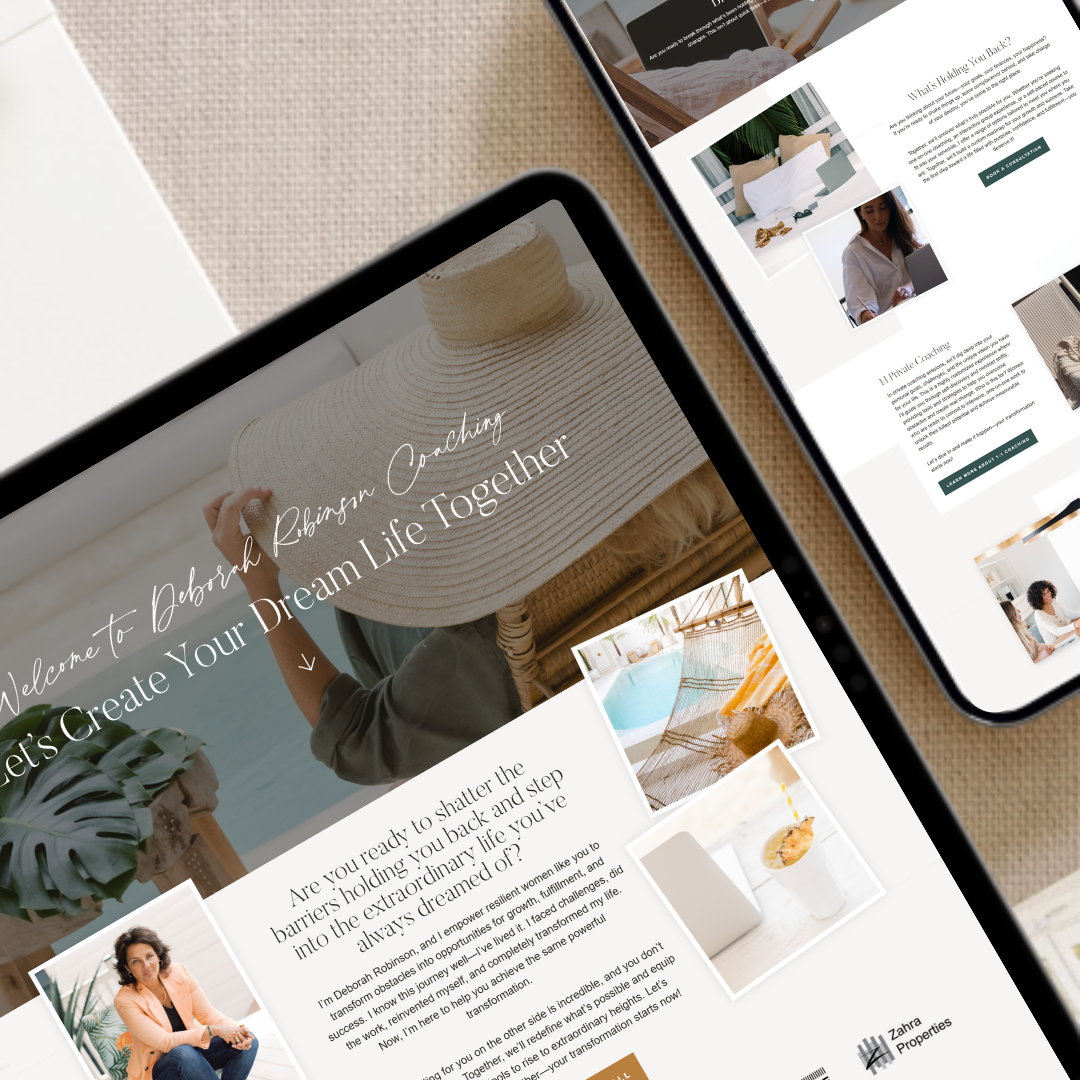A high-converting website isn’t just about aesthetics—it’s about strategy, functionality, and user experience working together to guide visitors toward action. Whether you’re a startup, service-based business, or established brand, your website should be your most powerful sales tool, capturing leads and converting visitors into loyal clients. If your website isn’t generating inquiries, bookings, or sales, it may be missing the key elements that separate high-performing websites from those that simply exist.
1. A Clear & Compelling Value Proposition
Within seconds of landing on your website, visitors should immediately understand who you are, what you offer, and why it matters. If they have to scroll or guess what your business does, they’ll leave. Your value proposition should be concise, benefit-driven, and positioned prominently at the top of your homepage.
Instead of vague messaging like “We build websites,” a strong value statement might be: “We create strategic, high-converting websites designed to turn visitors into paying clients.” The key is to highlight how your product or service solves a problem and delivers a transformation for your audience.
2. High-Impact Call-to-Actions (CTAs) That Guide Visitors to Convert
Your website needs clear, action-driven CTAs that tell visitors exactly what to do next. Without them, users will scroll aimlessly and leave without taking action. CTAs should be bold, well-placed, and use persuasive language to drive engagement.
Phrases like “Start Your Project” or “Get Your Free Consultation” work far better than weak, passive language like “Learn More.” Placement matters too—CTAs should appear above the fold, within content sections, and at the bottom of the page to encourage conversions at multiple touchpoints.
3. Mobile-Optimized, Fast-Loading Pages
More than 60% of website traffic now comes from mobile devices, which means your website must be fully responsive and load quickly. If your pages take longer than three seconds to load, potential clients will bounce and search elsewhere.
Ensuring a high-performing website means optimizing images, minimizing unnecessary animations, and using clean, efficient code. A mobile-friendly layout ensures that buttons, menus, and content are easy to navigate on any device, creating a smooth, frustration-free experience that keeps users engaged.
4. Trust Signals That Build Credibility & Authority
Potential clients won’t take action unless they trust your brand, and one of the fastest ways to build trust is by incorporating social proof and credibility markers throughout your website.
Client testimonials, case studies, and success stories provide tangible proof that your business delivers results. Showcasing logos of high-profile clients, media mentions, awards, and certifications reinforces credibility and positions your brand as an authority in your industry. Instead of simply stating that you provide great service, let your clients’ experiences and success stories do the talking.
5. SEO Optimization for Visibility & Organic Traffic
A beautifully designed website is useless if no one can find it. SEO (Search Engine Optimization) ensures that your website ranks on Google and attracts visitors organically instead of relying solely on paid advertising.
Key SEO elements that every high-converting website should include:
- Keyword-rich headlines and meta descriptions to improve rankings.
- Optimized images with alt text for better search visibility.
- Fast load speeds to prevent high bounce rates.
- Internal linking structure that helps users and search engines navigate your site easily.
A well-optimized website works like a long-term traffic engine, constantly bringing in potential clients without additional ad spend.
6. Simple, Intuitive Navigation That Enhances User Experience
If visitors struggle to find information on your site, they’ll leave before taking action. A high-converting website has a simple, intuitive navigation structure that makes it effortless for users to move through the site.
Your navigation bar should have five to six core pages at most—Home, About, Services, Portfolio, Blog, and Contact. Dropdown menus should be used sparingly to avoid overwhelming users. Each page should flow logically and lead visitors toward the next step in their journey, whether that’s reading more about your services or filling out an inquiry form.
7. A Conversion-Driven, High-Quality Design
First impressions matter, and a polished, high-end website design builds immediate trust with potential clients. A strategic layout, refined typography, and high-quality imagery create a sense of professionalism and credibility that keeps users engaged.
A high-converting website doesn’t just look good—it guides visitors toward taking action. The use of whitespace, clear typography, and a consistent brand aesthetic ensures that content is easy to digest and that CTAs stand out. Custom photography, brand-aligned colors, and a layout that feels premium and professional all contribute to making visitors feel confident in your brand.
Your Website Should Be Your Best Salesperson
A high-converting website isn’t just a digital presence—it’s a strategic business tool that generates leads and drives growth. If your site is missing these essential features, it’s time to optimize it for maximum impact.
If you’re ready to take your website to the next level, The Agency specializes in creating high-converting, strategy-driven websites that elevate brands and turn visitors into paying clients. Right now, we’re offering 20% off custom web design packages when you mention Code Elevate20.
📩 info@marketingwiththeagency.com
📞 (605) 610-9380
🌐 marketingwiththeagency.com




Comments +